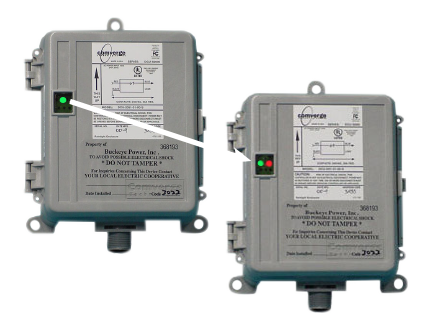Peak/Load Management
Electric cooperative members across the state have saved millions of dollars by allowing their generation supplier, Buckeye Power, to control their use of electricity at certain times through Peak Management.
Electricity cost is highest when it’s most needed – less than one percent of the hours in a year. The maximum or “peak” amount of electricity used determines Pioneer’s future costs of power. When the peak goes up, so does the cost. By reducing the demand for electricity created by electric water heaters, home-heating systems and central air-conditioning systems of our members, the cooperative reduces its costs for power.
So, when you volunteer to participate in a Peak Management program, you’re joining thousands of other electric cooperative members across Ohio to control use of electricity and save money.
Want to sign up or learn more about our Peak Management programs? E-mail energyadvisor@pioneerec.com or contact our office.
Understanding Load Control & Peak Alerts
A Peak Alert is issued due to high temperatures in the summer and low temperatures in the winter that result in high energy use. Load management is in effect normally between the hours of 1-7 p.m. in the summer and 6-10 a.m. and 4-8 p.m. in the winter. When peak demand is not enough to shed the necessary load for PJM, our 13-state, regional transmission organization (RTO), rolling blackouts may be necessary. Learn more about the potential threat to grid reliability here.
Appliances equipped with radio-control switches (RCS) can include: geothermal units, heat pumps, central a/c, and water heaters.
Thank you for using energy wisely during peak times. Your participation/conservation helps hold down energy costs for the co-op and your fellow members.
Understanding the Electric Grid
With Buckeye Power becoming a member of the PJM Regional Transmission Organization (RTO), hot summer or cold winter days in Ohio do not always correspond with the need to use peak management.
Costs are allocated in two ways: The first is based on five days when the entire PJM system load is highest and the second is determined during the one hour of the year when the transmission utilities serving Buckeye’s members experience their peak demand. This simply means it may be cool and mild (summer) or warm and mild (winter) in Ohio, but if the east coast is experiencing high temperatures and humidity in the summer or frigid temperatures in the winter, it may be necessary to control.
Radio-Controlled Switch
The radio-controlled switch (RCS) is a vital part of the load management system. Whenever there is a risk of a peak, the RCS is activated and temporarily interrupts your electricity. On your air conditioner, this does not control your thermostat or harm your systems in any way. It simply cycles the compressor of your HVAC unit for brief periods of time. Air continues to circulate through your home. Cycling periods are brief so that current program participants rarely experience a change in comfort. During these cycles, the air handler continues to run circulating air throughout the home.
For water heaters, the switch interrupts the power supply to the heating elements, however since the water in an electric water heater stays warm for several hours without power, most members will never notice the temporary shutdown.
What do the indicator lights mean?
When switches are in use a red light illuminates on the RCS. There is also a green light on the RCS, which should always be on to indicate there is power to the RCS.

© 2024 Pioneer Electric Cooperative.
All rights reserved. | Web design by Jetpack






